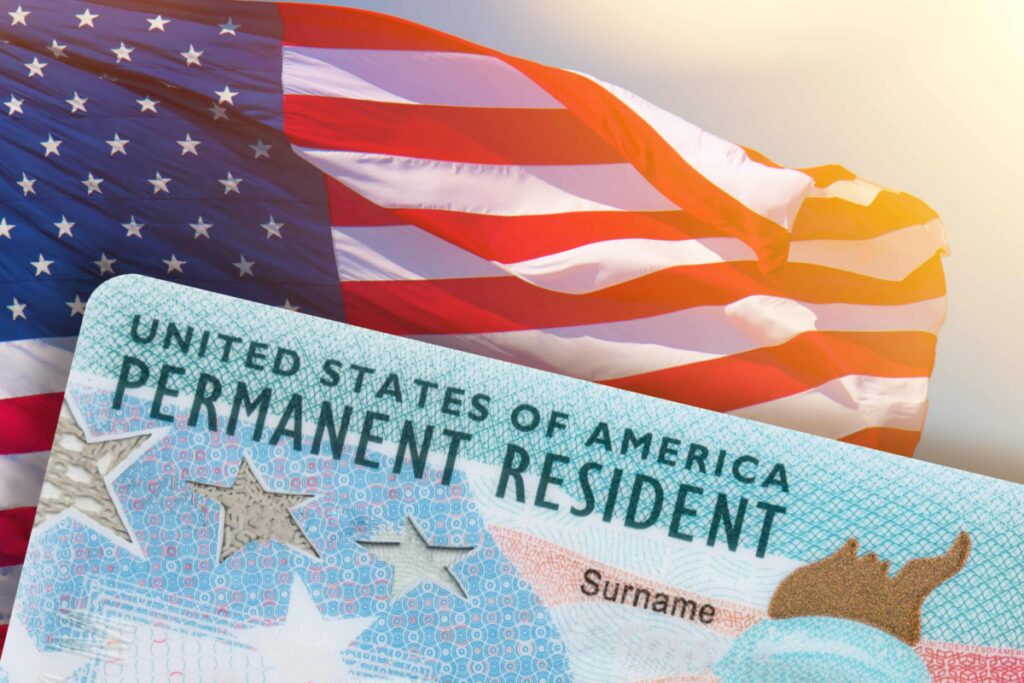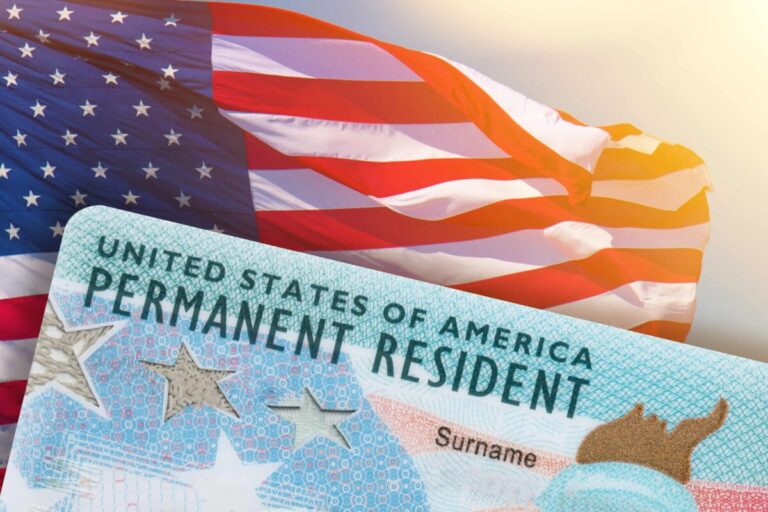If you’ve become a lawful permanent U.S. resident, then your green card—officially known as a permanent resident card—is an essential form of identification. It allows you to work and move freely throughout the country, so it’s important to replace a stolen or lost green card as soon as possible.
If you lose your green card, you won’t lose your status as a permanent resident, but you may have trouble proving your residency status to employers or government agencies.
It can take a while to get a replacement green card, so be sure to report a lost green card as soon as it goes missing.
Here’s what to do if your green card is lost or stolen in the U.S. as well as what to do if you lose your green card overseas.
How to replace a lost green card
If your green card is lost, stolen, or damaged, you’ll need to fill out USCIS Form I-90 for green card replacement or renewal. You can submit these forms online or by mail.
In addition to standard biographic information, the USCIS may also ask for supporting documents to prove your immigration status.
Once you’ve filled out the form, you can contact USCIS via their Contact Center for support and to track your case.
What happens if my green card is stolen?

To replace a stolen green card, you can follow the same steps you would for a lost card. In the case of a stolen card, it’s especially important to contact USCIS right away by phone or on their website to reduce the risk of identity theft.
If you suspect that your green card has been stolen, you may also want to file a police report. The police probably won’t be able to recover the card itself, but the report will serve as an official record in case anyone uses your card illegally.
How long does it take to replace a green card?
Processing times may vary, but it can take six months or more to get a new green card. You’ll get a receipt once you’ve submitted the completed form I-90. According to the USCIS website, “receipt notices can be presented with an expired Green Card as evidence of continued status” for up to 24 months.
How much does a replacement green card cost?
As of this writing, the green card replacement process costs about $455, plus biometric services, which is $85. In total, a green card replacement will cost you about $540.
If you’ve never received your card or if the Department of Homeland Security (DHS) printed your card with incorrect information, you aren’t required to pay the fee.
What if my green card is lost or stolen outside of the U.S.?
USCIS only issues replacement green cards within the U.S., so if you’re outside of the country when your green card is lost or stolen, you’ll need to follow a different process to gain re-entry to the U.S.
First, visit the nearest U.S. consulate or U.S. embassy to let them know that your green card was lost or stolen, and file an application for travel document (Form I-131A).
If you’ve been outside of the country for less than a year, you should receive a boarding foil or another form of carrier documentation so you can board your flight.
Then, apply for a replacement green card once you get back to the U.S.
How else can I prove my residency status?
If you need temporary proof of your residency status, you can schedule an appointment with a USCIS office and request an I-551 stamp in your passport. The stamp will serve as official verification for one year.
Also, you can locate your alien registration number on other documents, such as your USCIS receipt notice.
FAQ: Green Card Basics
What is a green card?
A green card, or permanent resident card, is a form of identification for immigrants who have met the criteria to become permanent residents of the United States. It’s a small, plastic card the same size and shape as a driver’s license. While it’s important to carry your green card around with you, it can be easy to lose or misplace.
The U.S. Citizenship and Immigration Services (USCIS) is responsible for issuing green cards to applicants with a valid immigrant visa. They handle a wide range of cases, from visa applications to citizenship by naturalization, and they can issue you a replacement green card if yours is lost.
Who is eligible for a green card?

According to USCIS.gov, you can become eligible to apply for a green card:
- As family of a lawful permanent resident
- Through employment
- Through refugee or asylum status
- Through Special Immigrant status
There are many other conditions that can determine your eligibility for a green card. For example, if you are a native or citizen of Cuba or if you were able to obtain a diversity visa through the Department of State’s lottery process, you might qualify for one. Be sure to seek legal advice if you’re in any doubt about your green card eligibility.
How do you apply for a green card?
To obtain a green card, you’ll need to apply for one. In most cases, the first step is for your sponsor to file an immigrant petition for you. After USCIS approves your petition, you can file Form I-485, the Application to Register Permanent Residence or Adjust Status. This is your green card application.
There’s a filing fee of $1,140 for most adult applicants as well as a biometrics fee of $85. You’ll need to attend an interview and a biometrics appointment at which USCIS officers take your fingerprints, take photos, and get your signature. You’ll eventually receive a decision on your petition.
If you are approved, you’ll become a lawful permanent resident and hold many of the same rights as a U.S. citizen. You’ll also get an official green card, which resembles a driver’s license and can serve as a valid form of photo ID.
Most green cards expire after 10 years. In most cases, you can’t use an expired green card, but once you’ve applied for a renewal, you’ll get an automatic extension on your existing card for 24 months after the expiration date.
What is a conditional permanent resident?
Conditional permanent residency applies to some visa applicants, usually in the case of a marriage that is less than two years old. A conditional permanent resident receives a green card that expires in two years, rather than the full 10-year period.
Conditional permanent residents must apply to remove the conditions (for example, by proving that they are still married after two years) before they receive lawful permanent resident status. The process of replacing a lost green card is the same regardless of whether you’re a lawful permanent resident or a conditional permanent resident.
What are the advantages of having a green card?
A green card is more than just a travel document. Unlike a passport or birth certificate, a green card shows that you have the right to live and work in the United States.
Once you have had your permanent resident status for five years (or three years if you are married to a U.S. citizen), you can apply for citizenship. With a green card, you can sponsor other members of your family for permanent residency as well.
Although you can’t vote with a green card, you may be eligible for Social Security and other forms of government assistance.
Send money home with peace of mind

Many immigrants to the United States work hard to send financial support to their loved ones overseas. Remitly makes it possible to send these funds with peace of mind.
